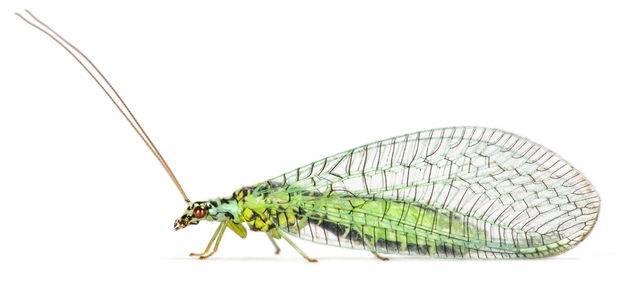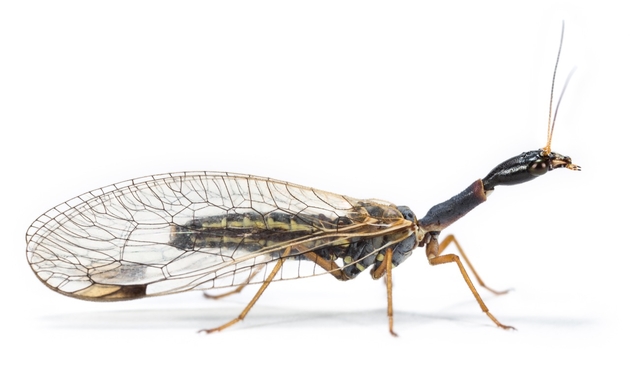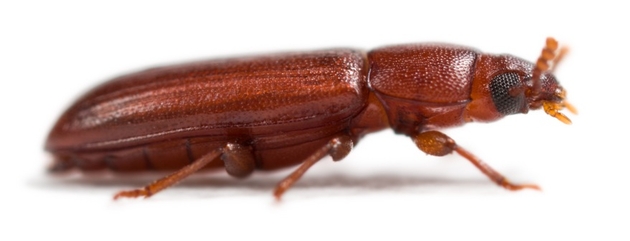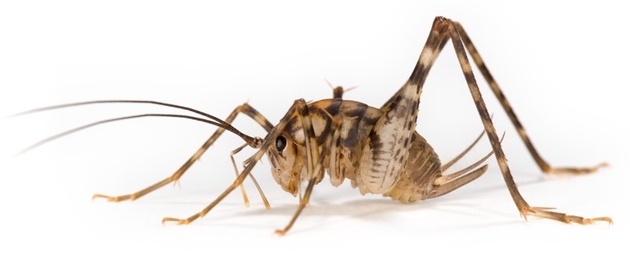
Scientists resolve the evolution of insects
A collaboration of more than 100 researchers from 10 countries announce the results of an unprecedented scientific study that resolves the history of the evolution of insects. The results are published in Science, the world’s leading peer-reviewed research journal, and include answers to many long held questions about the evolutionary history of the world’s largest and most diverse group of organisms.
The results, published by scientists from the 1KITE project (1,000 Insect Transcriptome Evolution, www.1kite.org), are essential to understanding the millions of living insect species that shape our terrestrial living space and both support and threaten our natural resources.
“Insects are the most species rich organisms on earth. They are of immense ecological, economic and medical importance and affect our daily lives, from pollinating our crops to vectoring diseases,” says Dr. Bernhard Misof, Professor from Research Museum Alexander Koenig - Leibniz Institute for Animal Biodiversity (ZFMK) in Bonn, Germany, one of those who led the research effort. “We can only start to understand the enormous species richness and ecological importance of insects with a reliable reconstruction of how they are related.”
Using a dataset consisting of 144 carefully chosen species, 1KITE scientists present reliable estimates on the dates of origin and relationships of all major insect groups based on the enormous molecular dataset they collected. They show that insects originated at the same time as the earliest terrestrial plants about 480 million years ago. Their analyses therefore suggest that insects and plants shaped the earliest terrestrial ecosystems together, with insects developing wings to fly 400 million years ago, long before any other animal could do so, and at nearly the same time that land plants first grew substantially upwards to form forests.
“Phylogeny forms the foundation for telling us the who?, what?, when?, and why? of life,” says Dr. Karl Kjer, (Rutgers - State University of New Jersey, USA). “Many previously intractable questions are now resolved, while many of the “revolutions” brought about by previous analyses of smaller molecular datasets have contained errors that are now being corrected”.
The new reconstruction of the insect tree of life was only possible by a cooperation of more than 100 experts in molecular biology, insect morphology, paleontology, insect taxonomy, evolution, embryology bioinformatics and scientific computing. The consortium was led by Prof. Dr. Karl Kjer (Rutgers - State University of New Jersey, USA), Dr. Xin Zhou (Deputy Director of the China National GeneBank, BGI-Shenzhen), and Prof. Dr. Bernhard Misof from the ZFMK.
“We wanted to promote research on the little-studied genetic diversity of insects,” says Dr. Xin Zhou, Deputy Director of the China National GeneBank, BGI-Shenzhen in China, who initiated the project. “For applied research, it will become possible to comparatively analyze metabolic pathways of different insects and use this information to more specifically target pest species or insects that affect our resources. The genomic data we studied (the transcriptome – all of the expressed genes) gives us a very detailed and precise view into the genetic constitution and evolution of the species studied.”
However, the goal to analyze more than 1,000 insect transcriptomes, a set of all RNA molecules, posed a major challenge to the bioinformatics and scientific computing team within 1KITE. “During the planning phase of the project it became clear that the available software would not be able to handle the enormous amount of data,” relates Prof. Dr. Alexandros Stamatakis, head of the research group „Scientific Computing“ at the Heidelberg Institute for Theoretical Studies (HITS) and Professor for High Performance Computing at the life sciences of the Karlsruhe Institute for Technology (KIT). “The development of novel software and algorithms to handle “big data” such as these, is another notable accomplishment of the 1KITE team, and lays a theoretical foundation for future analyses of other very large phylogenomic data sets.”
The 1KITE team’s diverse strengths and strong international cooperation, including museum repositories for vouchering of specimens, results, and meta data, is a blueprint for international excellence in research.
About 1KITE
The 1K (1000) Insect Transcriptome Evolution project (1KITE) has brought together internationally recognized experts in molecular biology, morphology, paleontology, embryology, bioinformatics, and scientific computing in a yet unparalleled way. For more information, visit www.1kite.org. 1KITE aims to study the transcriptomes (that is the entirety of expressed genes in an organism at time of collection) of more than 1,000 insect species encompassing all recognized insect orders. The resulting data allows for inferring a robust phylogenetic backbone tree of insects and will provide numerous additional insights into insect biology and evolution. Furthermore, the project includes the development of new software for data quality assessment and analysis.
About Science
Founded in 1880 by Thomas Edison and published by the American Association for the Advancement of Science (AAAS), Science ranks as the world's largest general science journal. Each week, Science provides more than 131,000 global subscribers with peer-reviewed original research, scientific research articles, science and research news, and more.
Green lacewing (Chrysopa perla). Copyright: Dr. Oliver Niehuis, ZFMK, Bonn, Photo: Teamwork Oliver Niehuis & Ralph S. Peters.
Snakefly (Dichrostigma flavipes), Copyright: Dr. Oliver Niehuis, ZFMK, Bonn. Photo: Teamwork Oliver Niehuis & Tanja Ziesmann.
Red flour beetle (Tribolium castaneum), Copyright: Dr. Oliver Niehuis, ZFMK, Bonn. Photo: Teamwork Oliver Niehuis & Ralph S. Peters.
Gold Wasp (Hedychrum nobile), Copyright: Dr. Oliver Niehuis, ZFMK, Bonn. Photo: Teamwork Oliver Niehuis & Tanja Ziesmann.
Greenhouse Camel Cricket (Diestrammena asynamora), Copyright: Dr. Oliver Niehuis, ZFMK, Bonn. Photo Teamwork Oliver Niehuis & Ralph S. Peters.
Stonefly (Perla marginata), Copyright: Dr. Oliver Niehuis, ZFMK, Bonn. Photo: Teamwork Oliver Niehuis & Ralph S. Peters.
The usage of the photos is free for the reporting about the publication if the copyright is named.
Source:
The publication „Phylogenomics resolves the timing and pattern of insect evolution“(authors: Bernhard Misof, Shanlin Liu, Karen Meusemann, Ralph S. Peters, Alexander Donath, Christoph Mayer, Paul B. Frandsen, Jessica Ware, Tomá Flouri, Rolf G. Beutel, Oliver Niehuis, Malte Petersen, Fernando Izquierdo-Carrasco, Torsten Wappler, Jes Rust, Andre J. Aberer, Ulrike Aspöck, Horst Aspöck, Daniela Bartel, Alexander Blanke, Simon Berger, Alexander Böhm, Thomas Buckley, Brett Calcott, Junqing Chen, Frank Friedrich, Makiko Fukui, Mari Fujita, Carola Greve, Peter Grobe, Shengchang Gu, Ying Huang, Lars S. Jermiin, Akito Y. Kawahara, Lars Krogmann, Martin Kubiak, Robert Lanfear, Harald Letsch, Yiyuan Li, Zhenyu Li, Jiguang Li, Haorong Lu, Ryuichiro Machida, Yuta Mashimo, Pashalia Kapli, Duane D. McKenna, Guanliang Meng, Yasutaka Nakagaki, José Luis Navarrete-Heredia, Michael Ott, Yanxiang Ou, Günther Pass, Lars Podsiadlowski, Hans Pohl, Björn M. von Reumont, Kai Schütte, Kaoru Sekiya, Shota Shimizu, Adam Slipinski, Alexandros Stamatakis, Wenhui Song, Xu Su, Nikolaus U. Szucsich, Meihua Tan, Xuemei Tan, Min Tang, Jingbo Tang, Gerald Timelthaler, Shigekazu Tomizuka, Michelle Trautwein, Xiaoli Tong, Toshiki Uchifune, Manfred G. Walzl, Brian M. Wiegmann, Jeanne Wilbrandt, Benjamin Wipfler, Thomas K. F. Wong, Qiong Wu, Gengxiong Wu, Yinlong Xie, Shenzhou Yang, Qing Yang, David K. Yeates, Kazunori Yoshizawa, Qing Zhang, Rui Zhang, Wenwei Zhang, Yunhui Zhang, Jing Zhao, Chengran Zhou, Lili Zhou, Tanja Ziesmann, Shijie Zou, Yingrui Li, Xun Xu, Yong Zhang, Huanming Yang, Jian Wang, Jun Wang, Karl M. Kjer, Xin Zhou) was published on November, 7th in the journal „Science“.
DOI: 10.1126/science.1257570
http://www.sciencemag.org/lookup/doi/10.1126/science.1257570
Further Information
More information, including a copy of the paper, can be found online at the Science press package at http://www.eurekalert.org/jrnls/sci. You will need your user ID and password to access this information.
Media Contact
Prof. Dr. Bernhard Misof
Head of the Centre for Molecular Biodiversity Research (ZMB) at Zoological Research Museum Alexander Koenig - Leibniz Institute for Animal Biodiversity
Adenauerallee 160
53113 Bonn
Tel: 0049 228 9122-289
E-Mail: b.misof [at] zfmk.de
Sabine Heine
Tel: 0049 228 9122 215
E-Mail: s.heine [at] zfmk.de
bonn.leibniz-lib.de
ZFMK: Zoological Research Museum Alexander Koenig - Leibniz-Institute for animal biodiversity is part of the Leibniz Association, a network of 89 scientifically, legally and economically independent research institutes and scientific service facilities. Leibniz Institutes perform strategic- and thematically-oriented research and offer scientific service of national significance while striving to find scientific solutions for major social challenges. More information: http://www.leibniz-gemeinschaft.de/.












